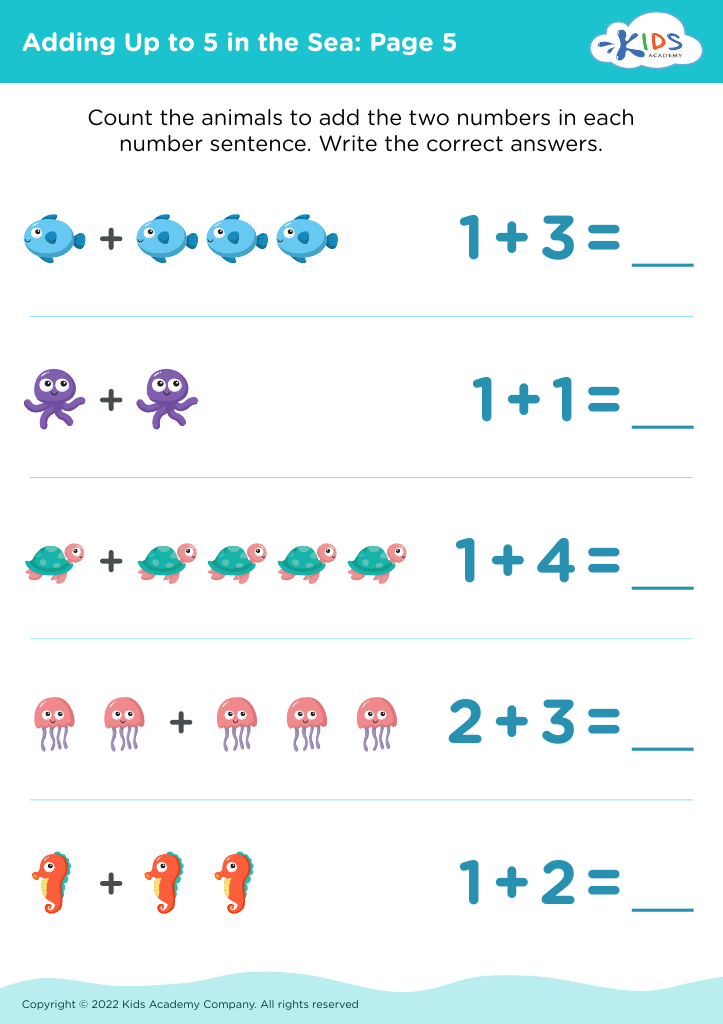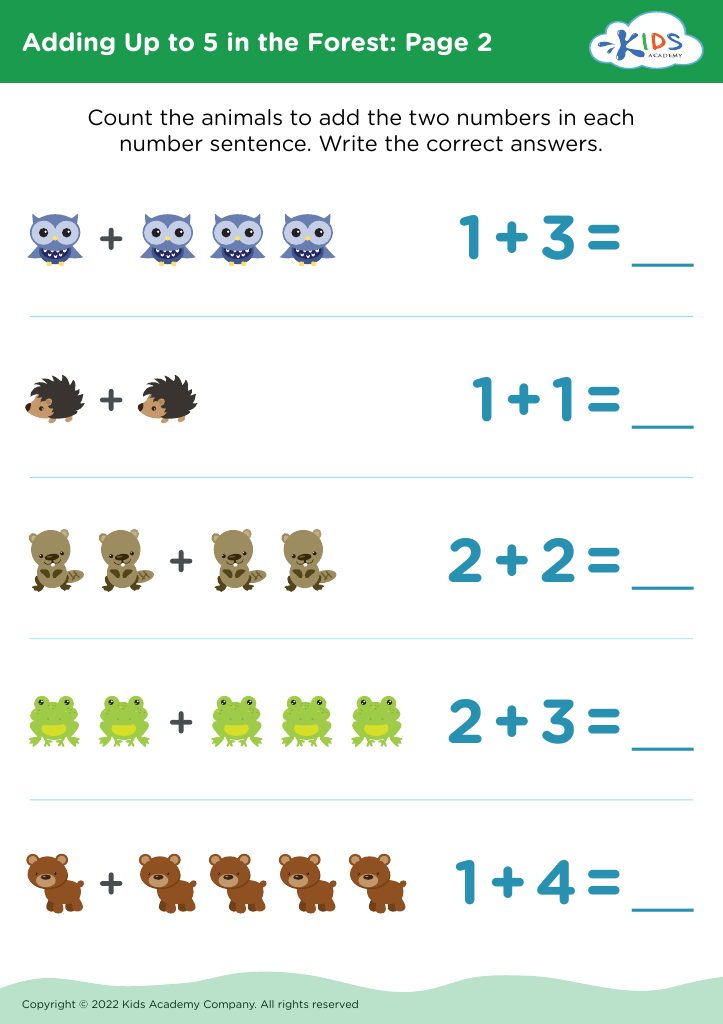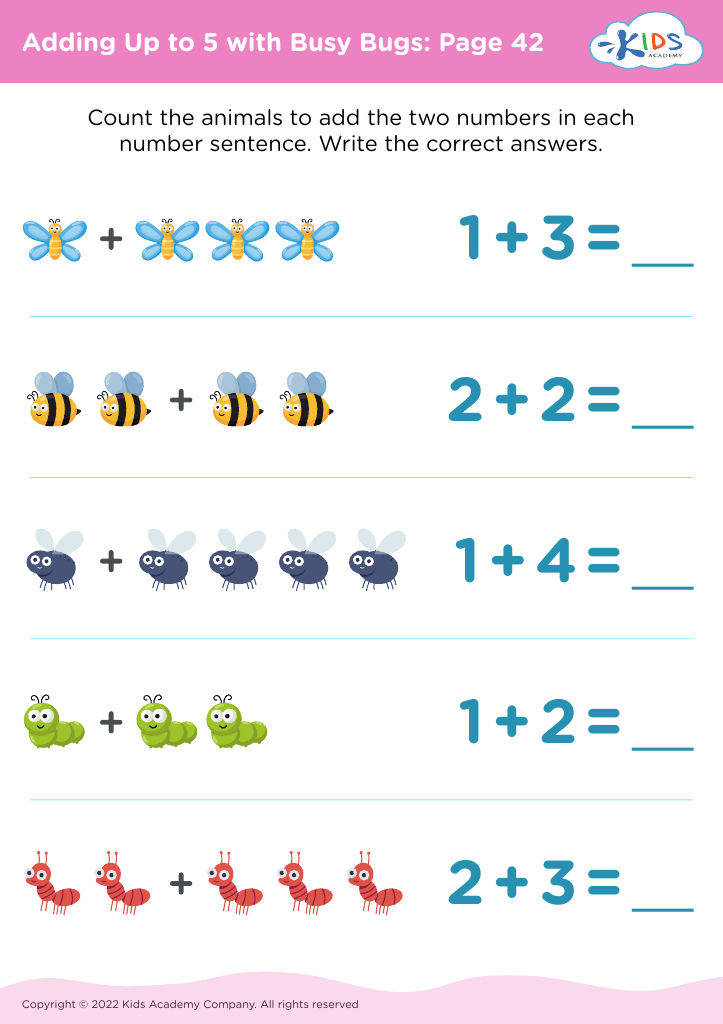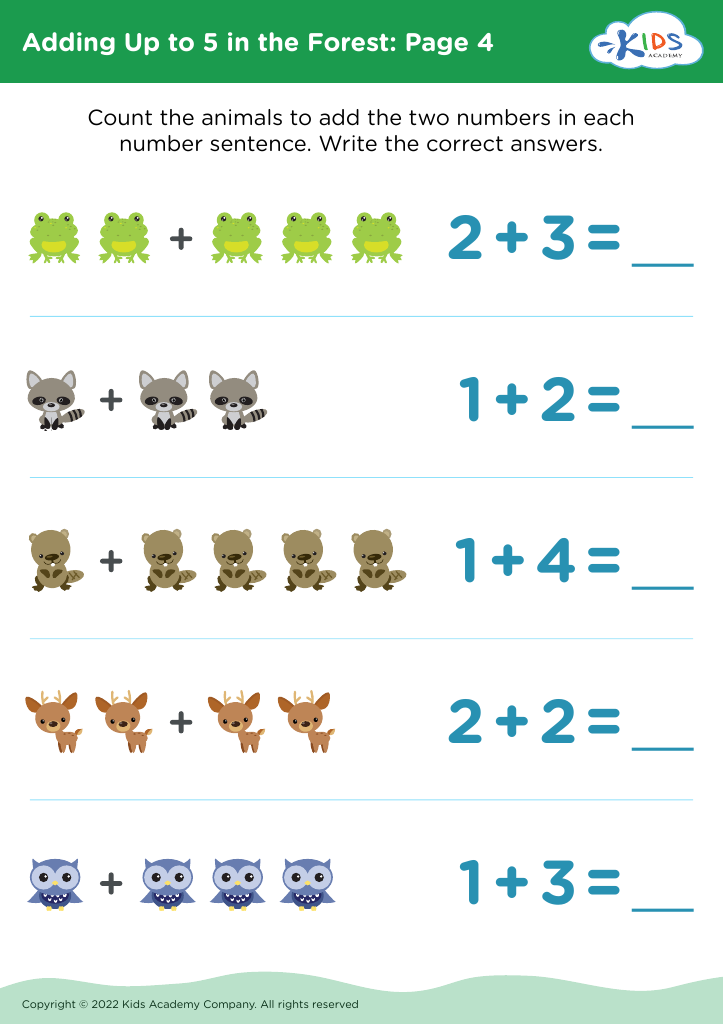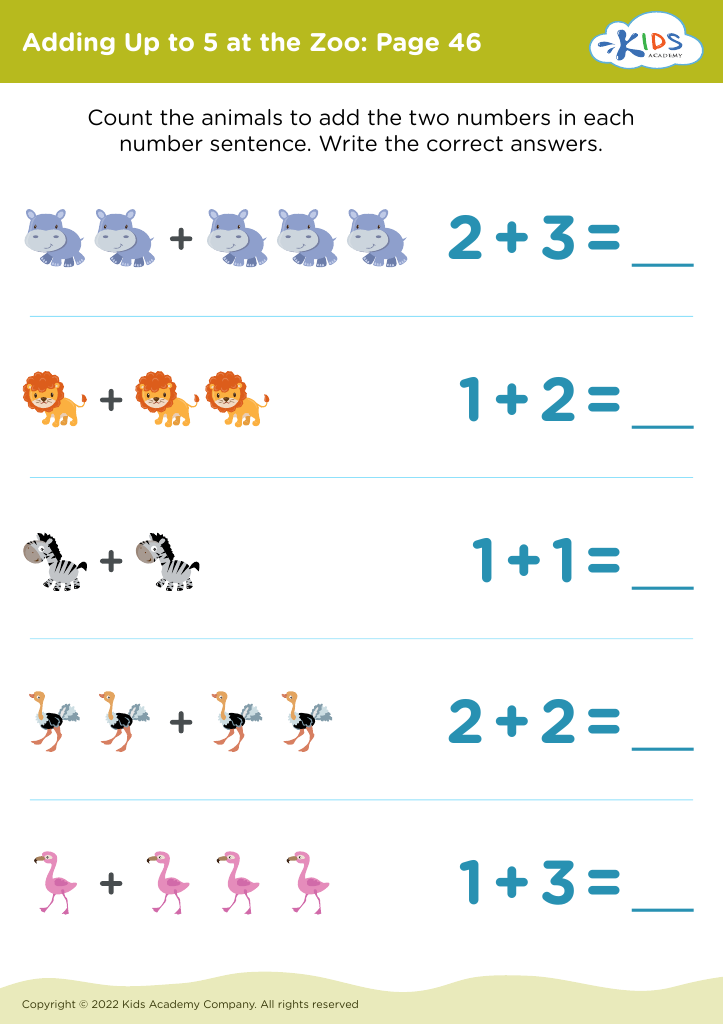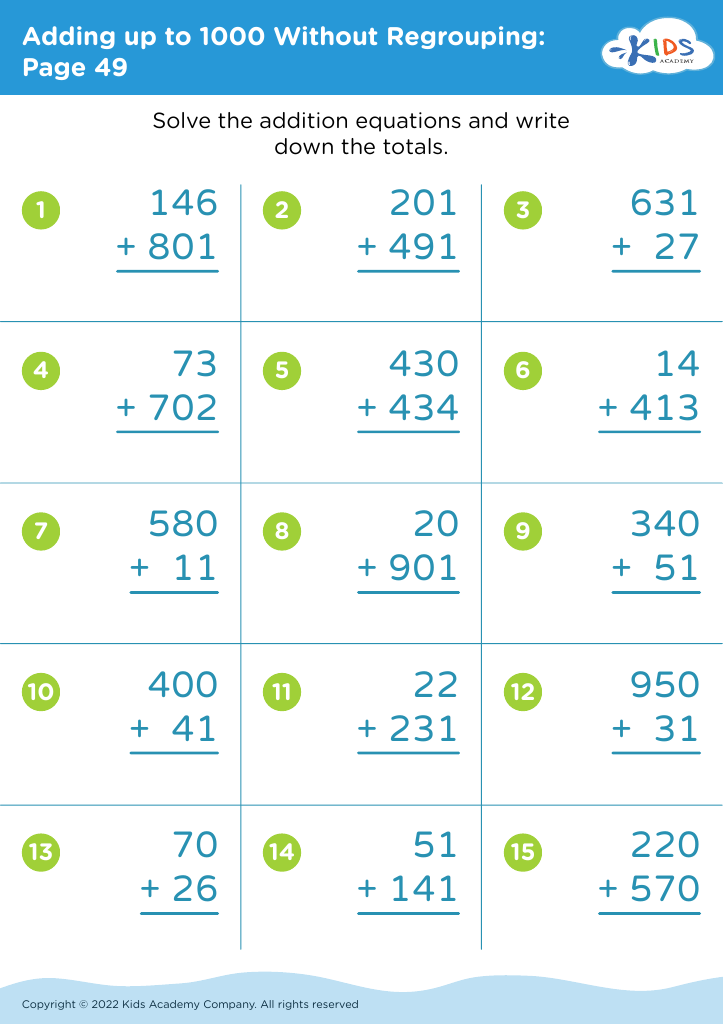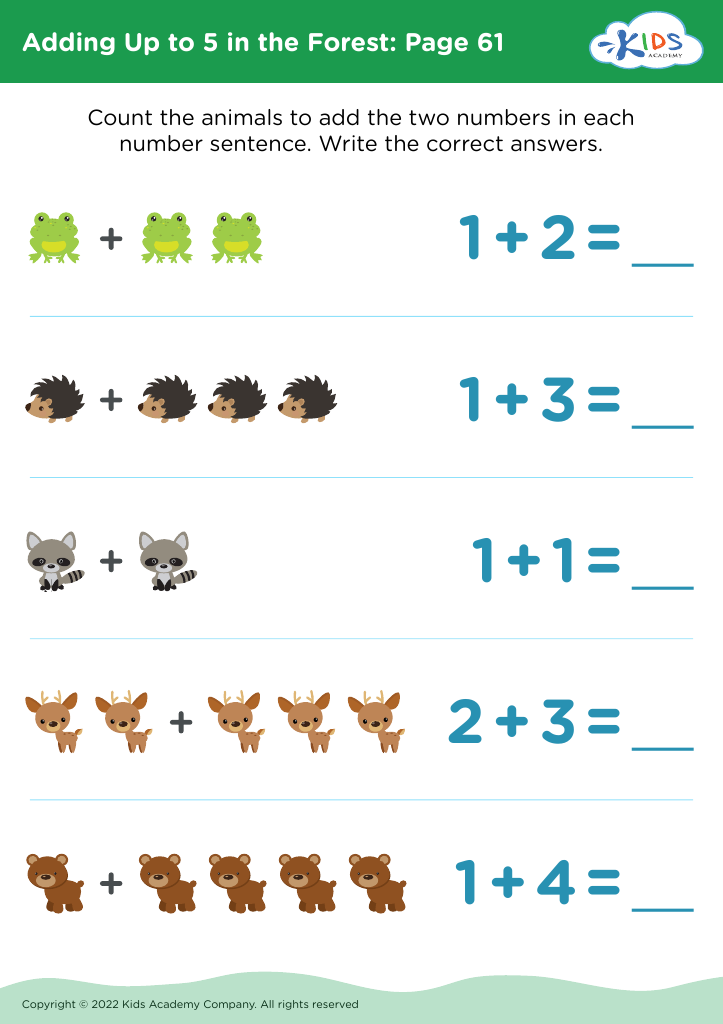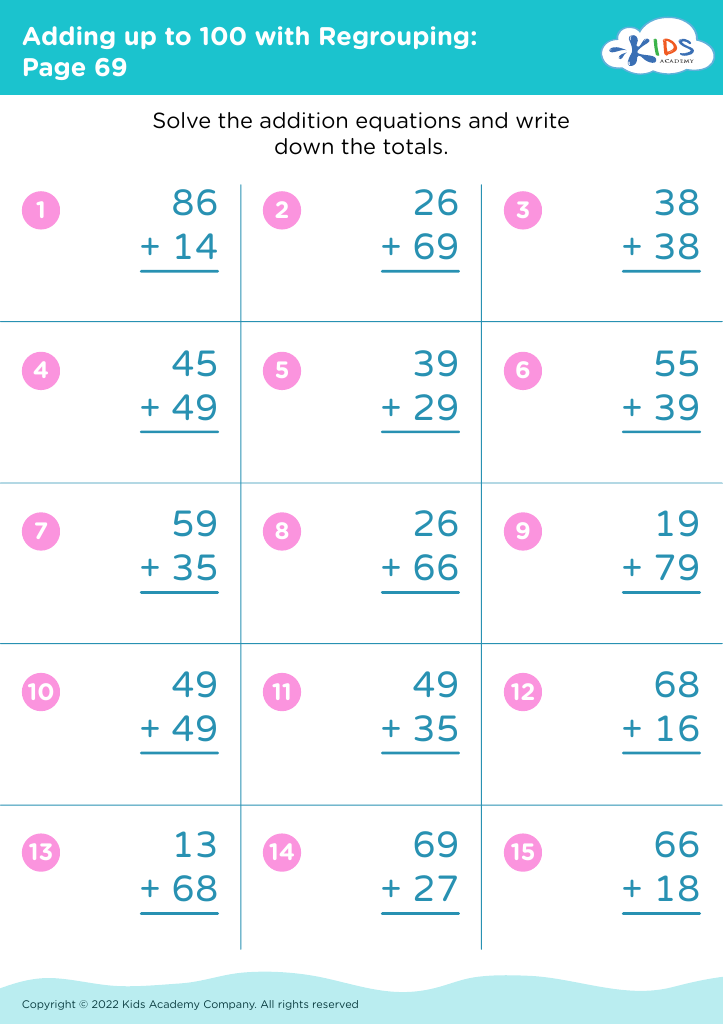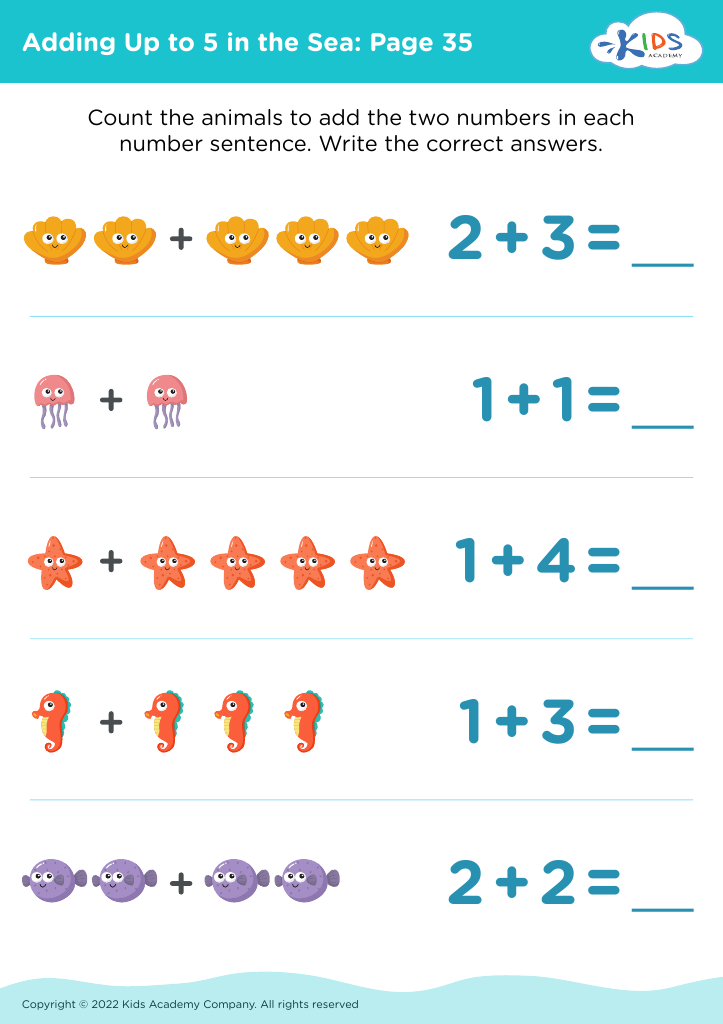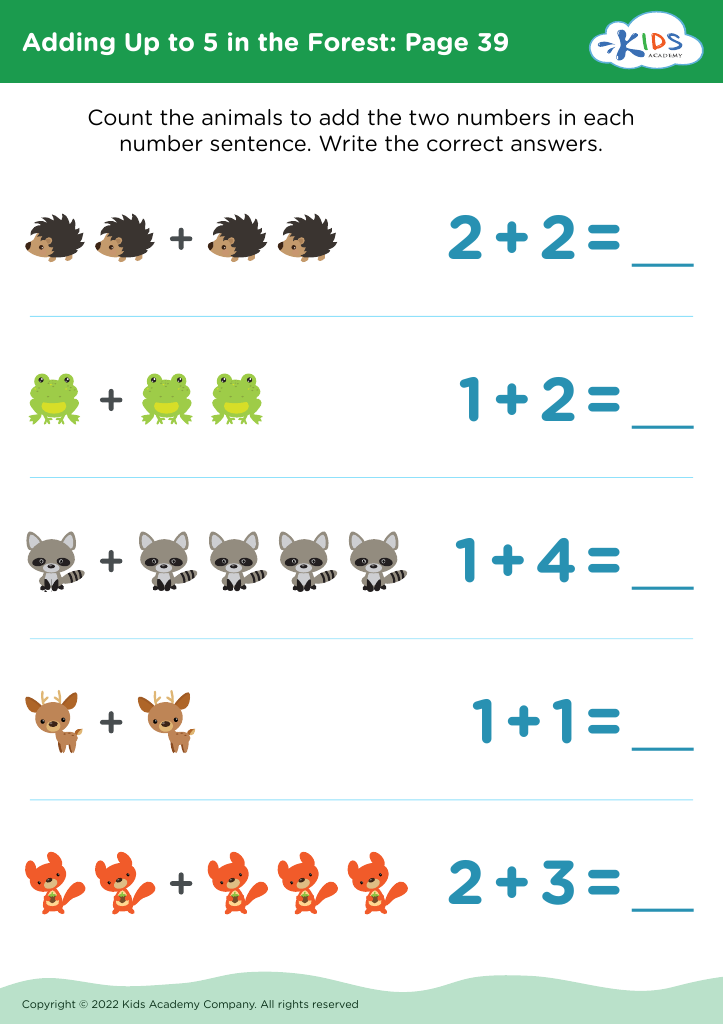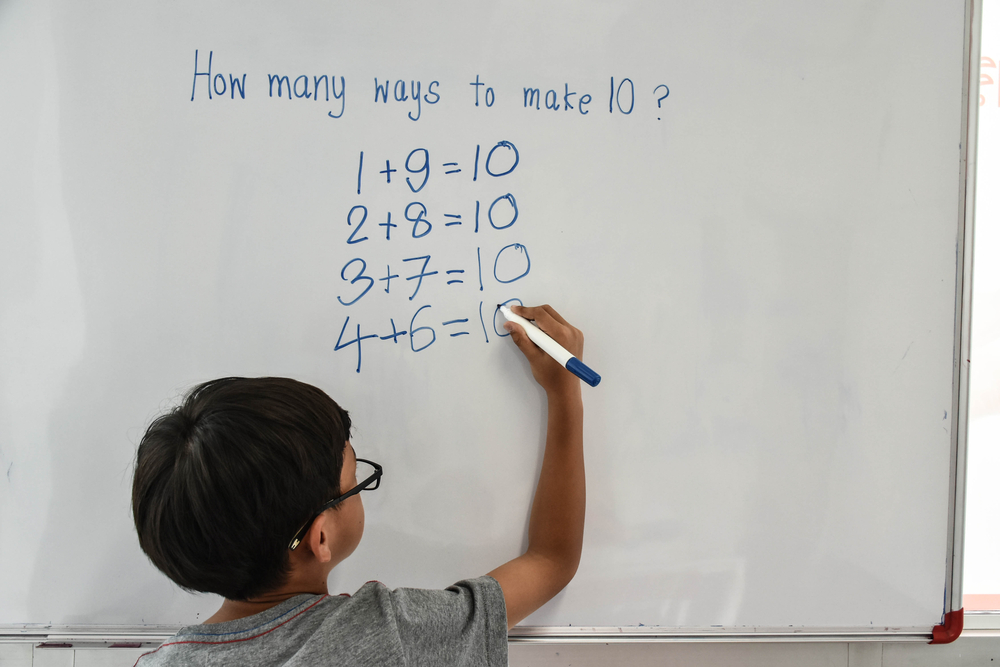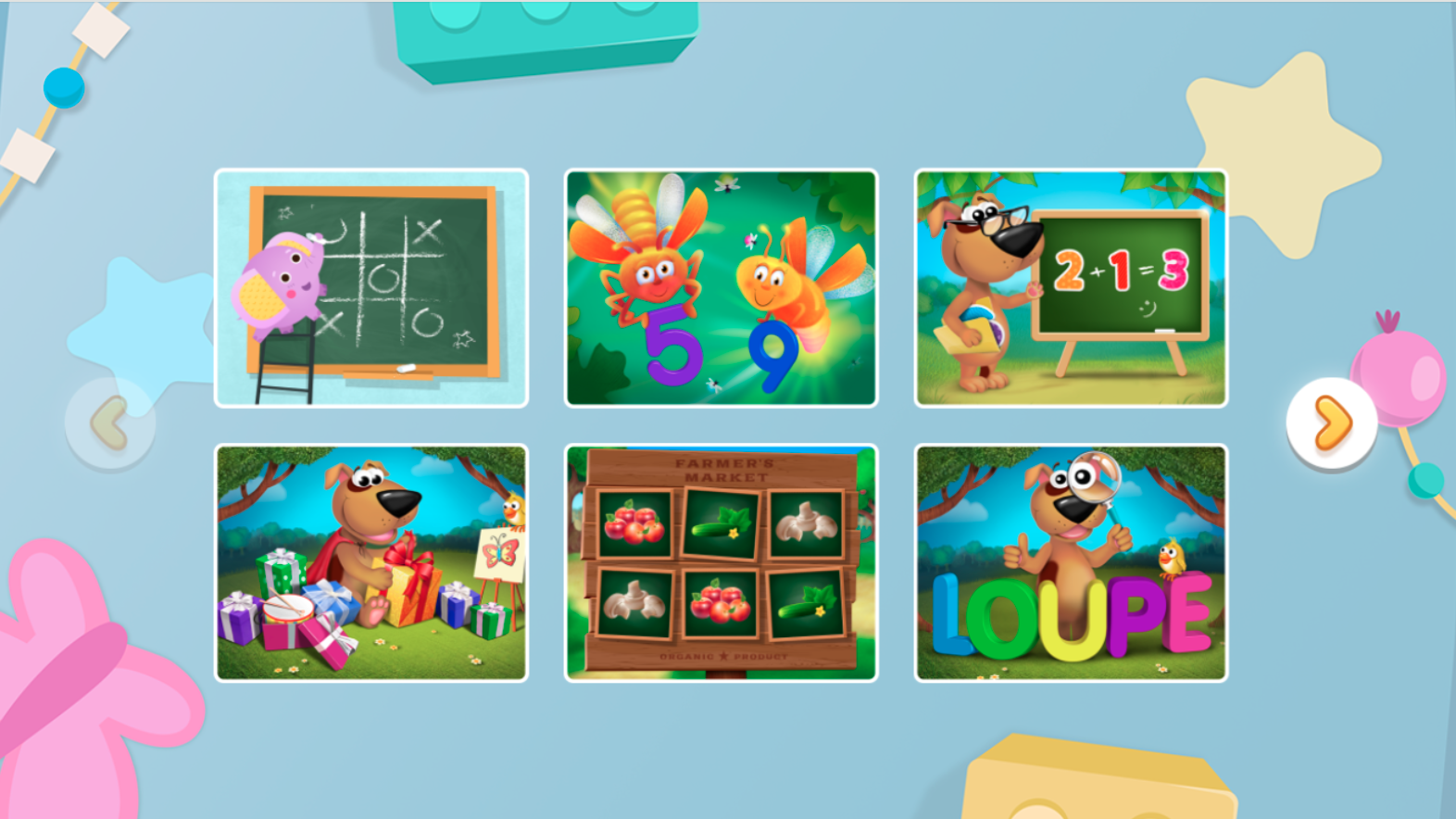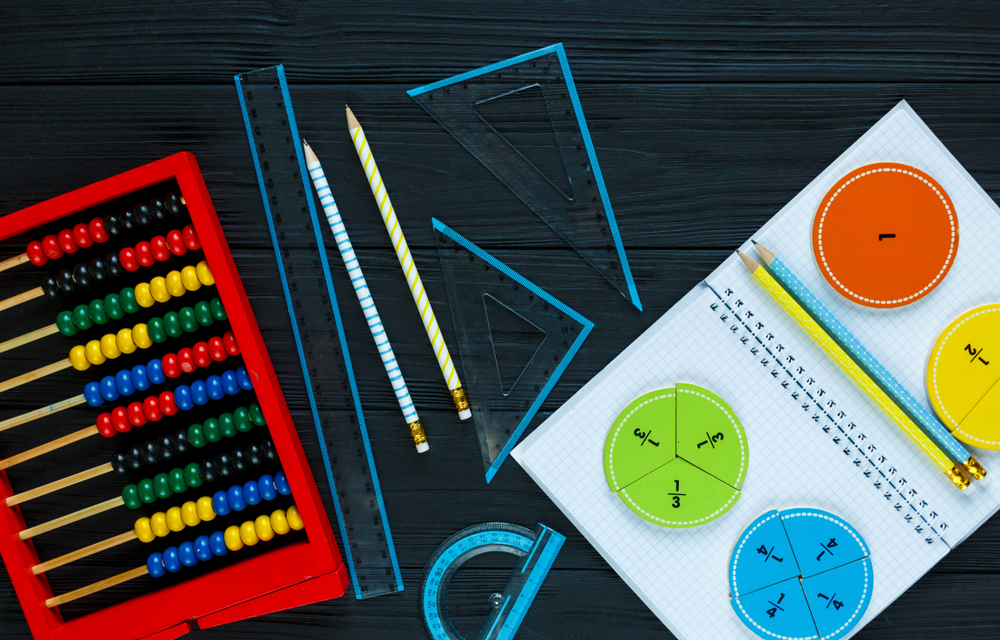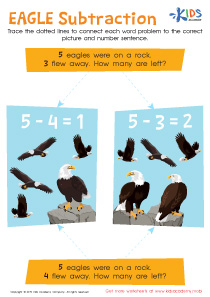Visual perception Addition Worksheets for Ages 3-8
16 filtered results
-
From - To
Discover our engaging Visual Perception Addition Worksheets designed for children ages 3-8. These worksheets blend fun and learning to help young learners develop critical visual perception and addition skills. Featuring colorful images and intuitive exercises, our worksheets make mastering early math concepts enjoyable and accessible. Perfect for home or classroom use, these resources assist in honing focus, pattern recognition, and number sense. Empower your child to confidently tackle addition while enhancing their cognitive abilities through play-based activities. Visit us now and turn learning into an exciting adventure with our expertly crafted Visual Perception Addition Worksheets!
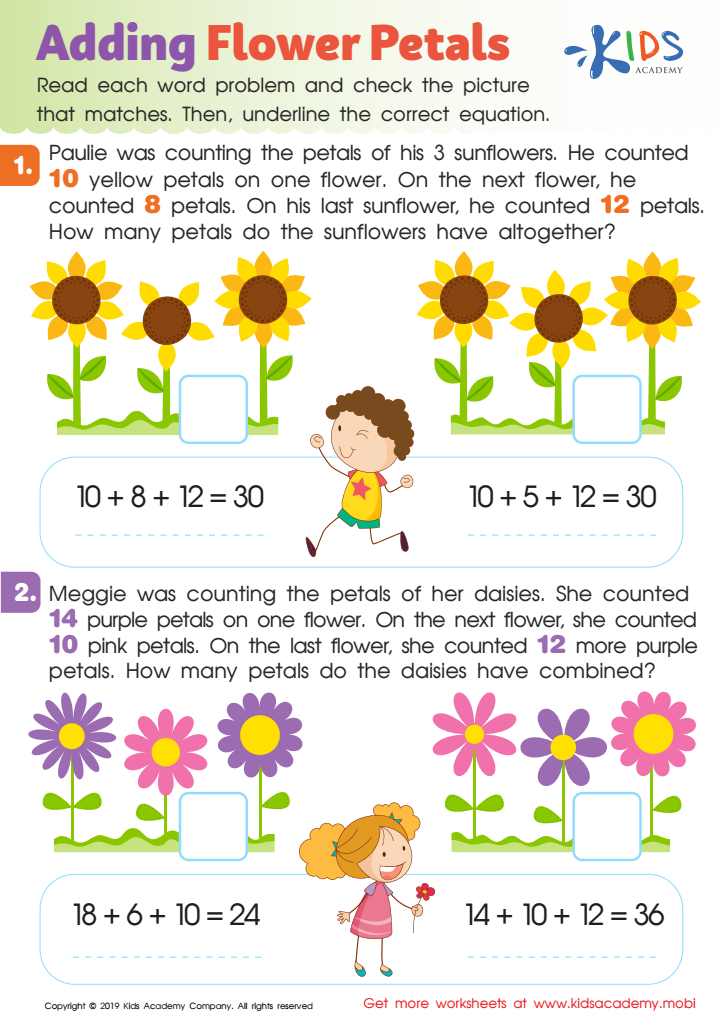

Adding Flower Petals Worksheet
Visual perception is the ability to interpret and understand visual information from the environment. In the context of addition for ages 3-8, visual perception plays a crucial role in early learning and cognitive development. For young children, visual perception enhancement can be achieved through engaging, visually-rich activities that simplify complex concepts.
Parents and teachers should care about this aspect because it lays the groundwork for essential skills such as reading, writing, and mathematics. When children use visual aids, like counters or picture puzzles, to perform addition, they engage multiple senses, reinforcing understanding through concrete, hands-on experiences. This approach caters to various learning styles, especially for kinesthetic and visual learners.
Furthermore, visual perception skills help children develop spatial awareness, improve attention to detail, and enhance problem-solving abilities. These skills are not only fundamental for academic success but also for everyday tasks, like organizing their belongings or navigating their surroundings.
By focusing on visual perception in addition, parents and teachers can make learning more accessible and enjoyable, foster a positive attitude towards math, and build a strong foundation for future educational pursuits. Ultimately, this comprehensive approach supports holistic development and prepares children to thrive in more advanced academic challenges.
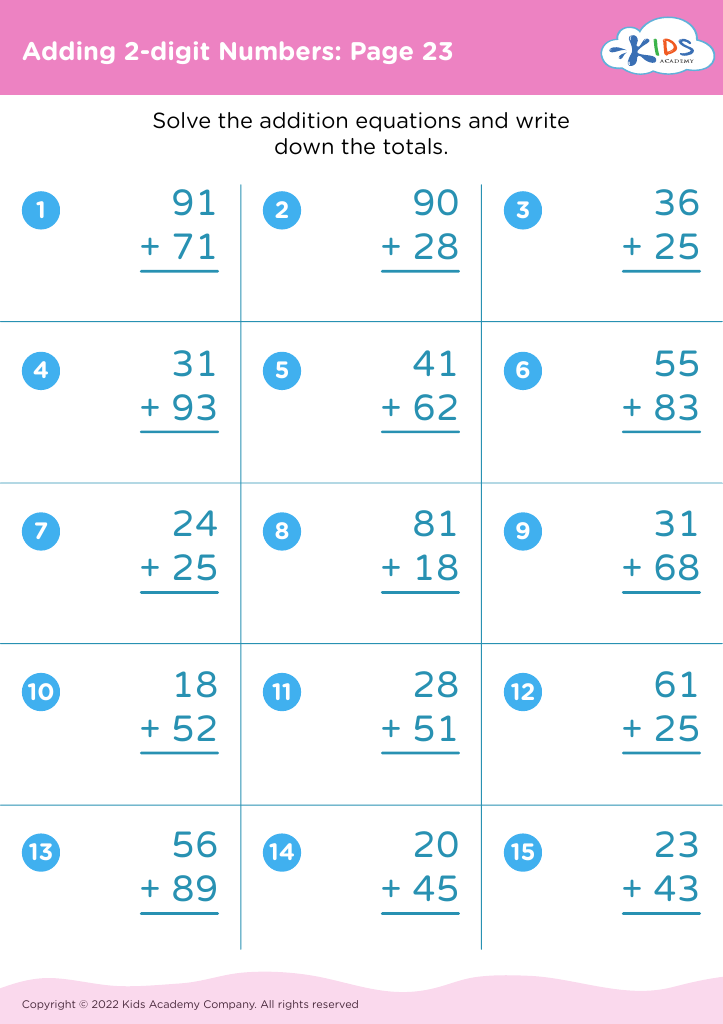
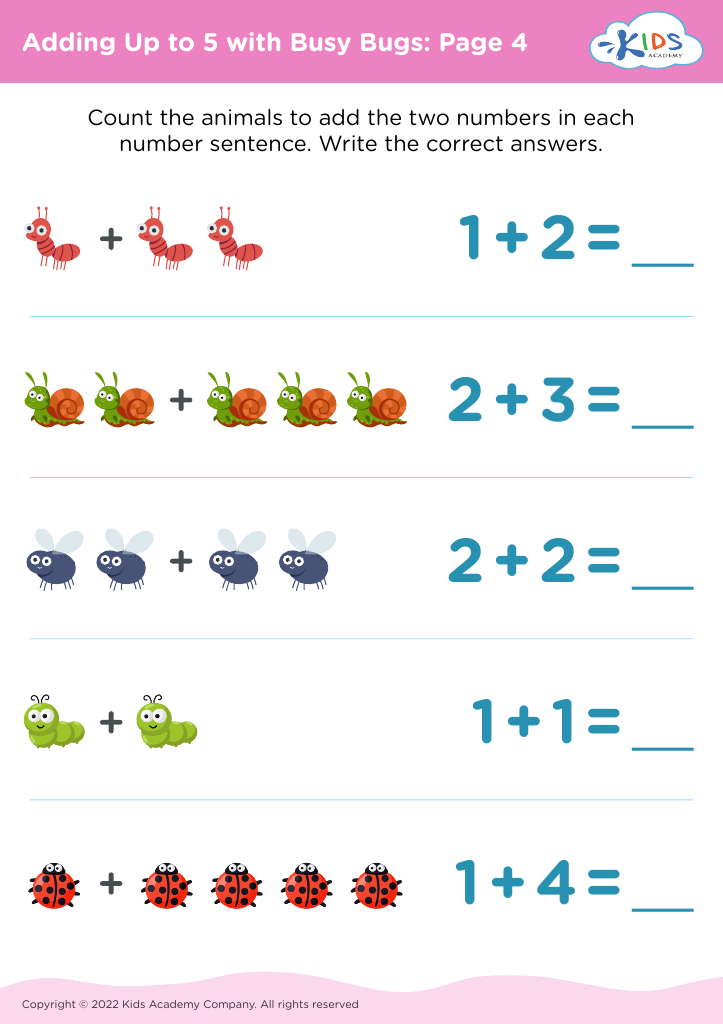
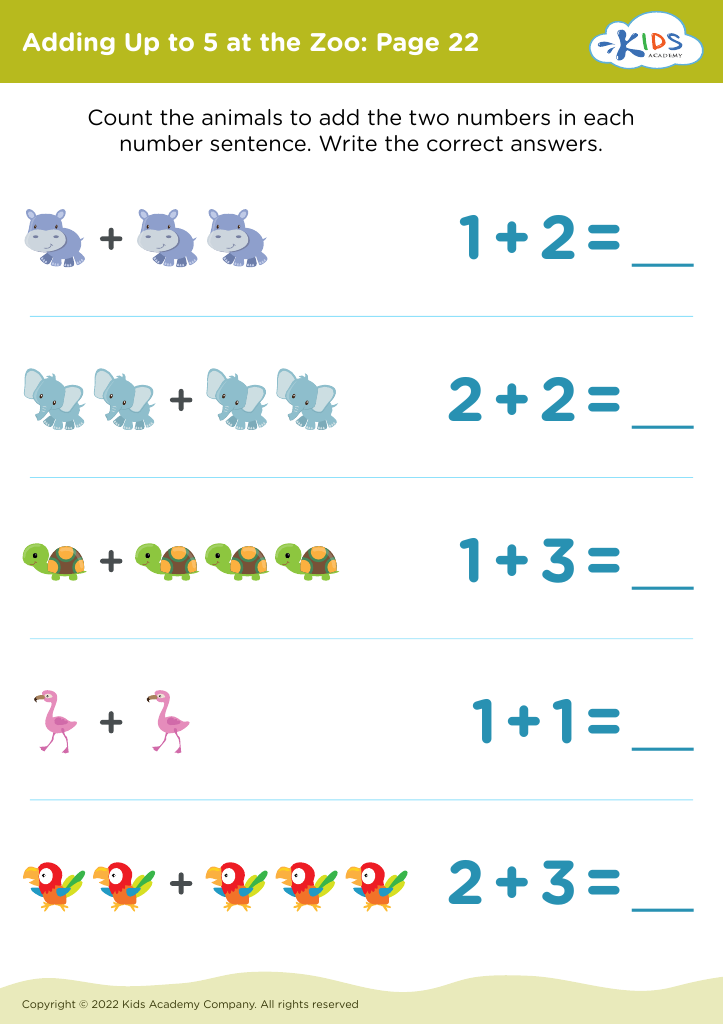
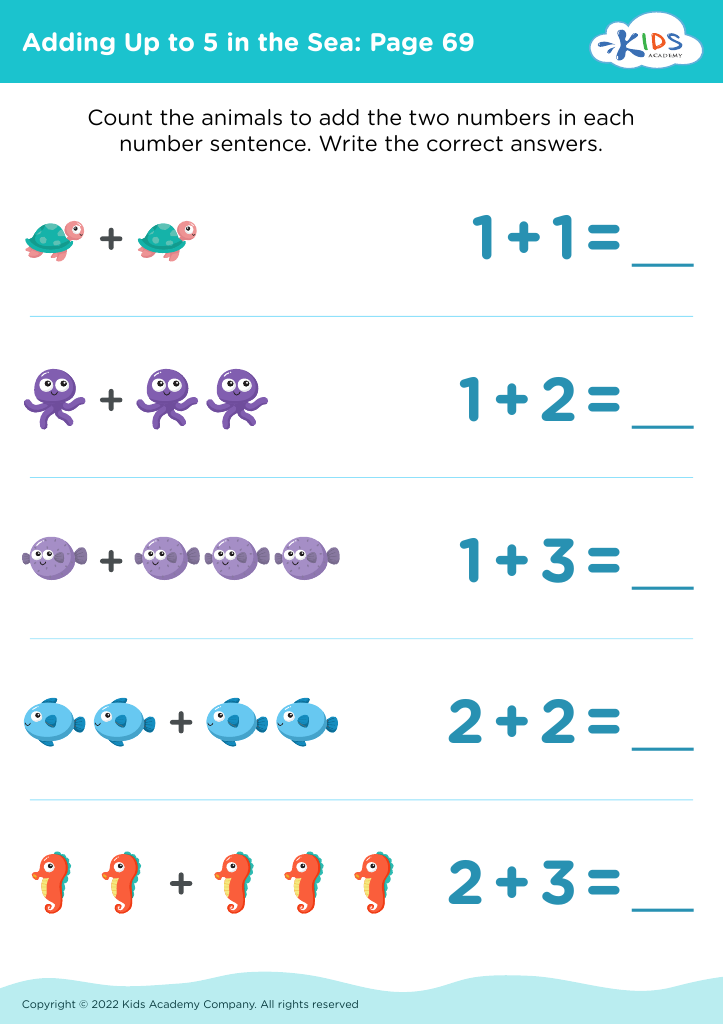
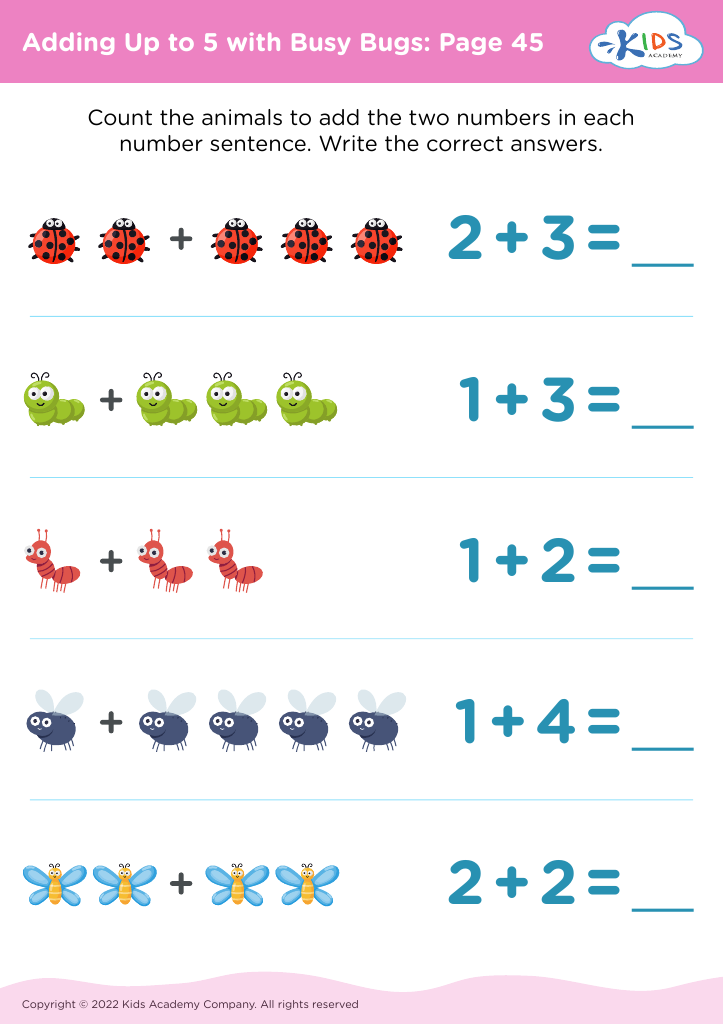
 Assign to My Students
Assign to My Students
